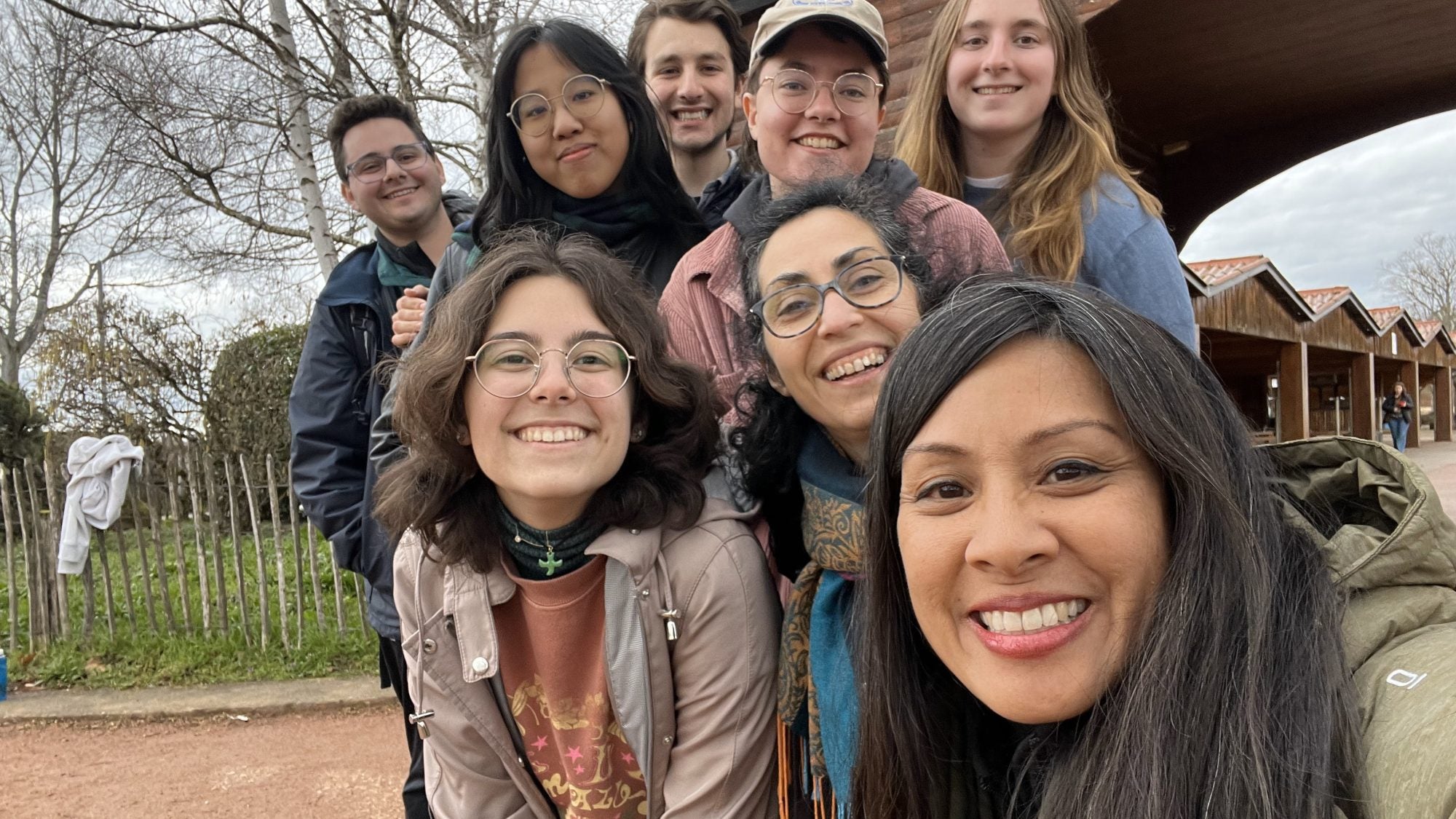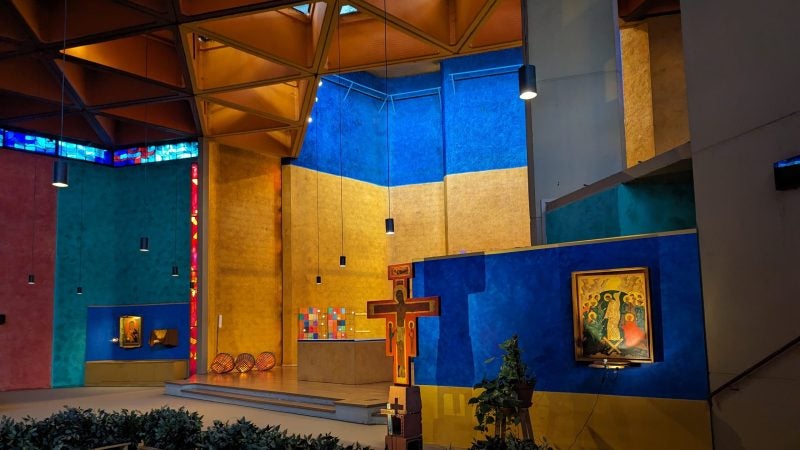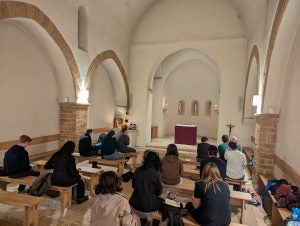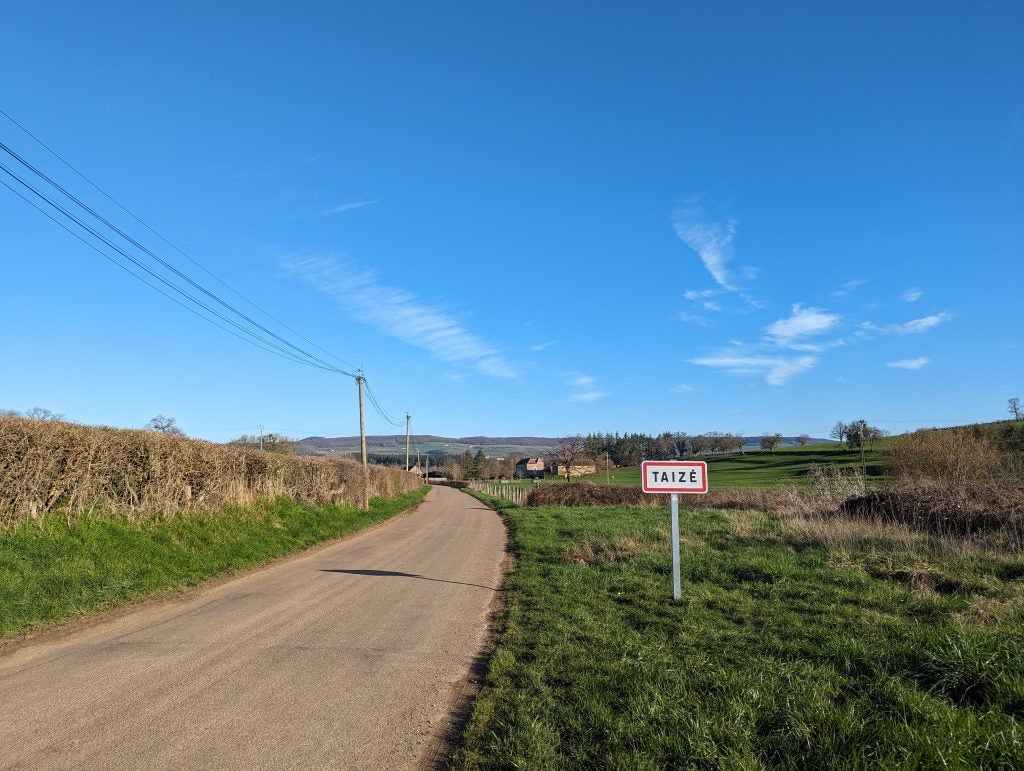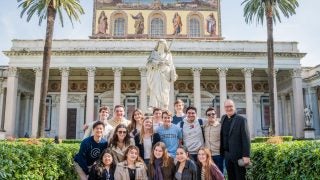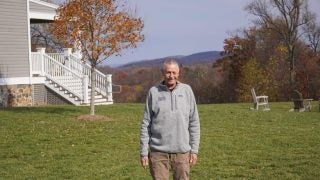Lukas Pitman (SFS’27) walks out of the church in the heart of the French countryside. It’s a cool night in March during Pitman’s spring break. He’d just spent the past hour in song and prayer with a group of Christian monks and pilgrims from all over the world.
Not ready to call it a night, he walks to a Catholic chapel down the road to pray more, admiring the ornate stained glass icons that adorn the small sacred space. It’s around midnight when he starts to head back to his dormitory, the brilliant stars illuminating the fields surrounding the village. In the distance, he can hear the sheep bleating in the midnight silence.
That night, he was filled with a sense of peace he’d never had in his life before. It’s a peace he’ll carry with him for a long time.
Over spring break, Georgetown’s Campus Ministry brought five students to Taizé, France. The small township is home to the Taize Community, an ecumenical Christian order of monks, or brothers, who come from all corners of the world.
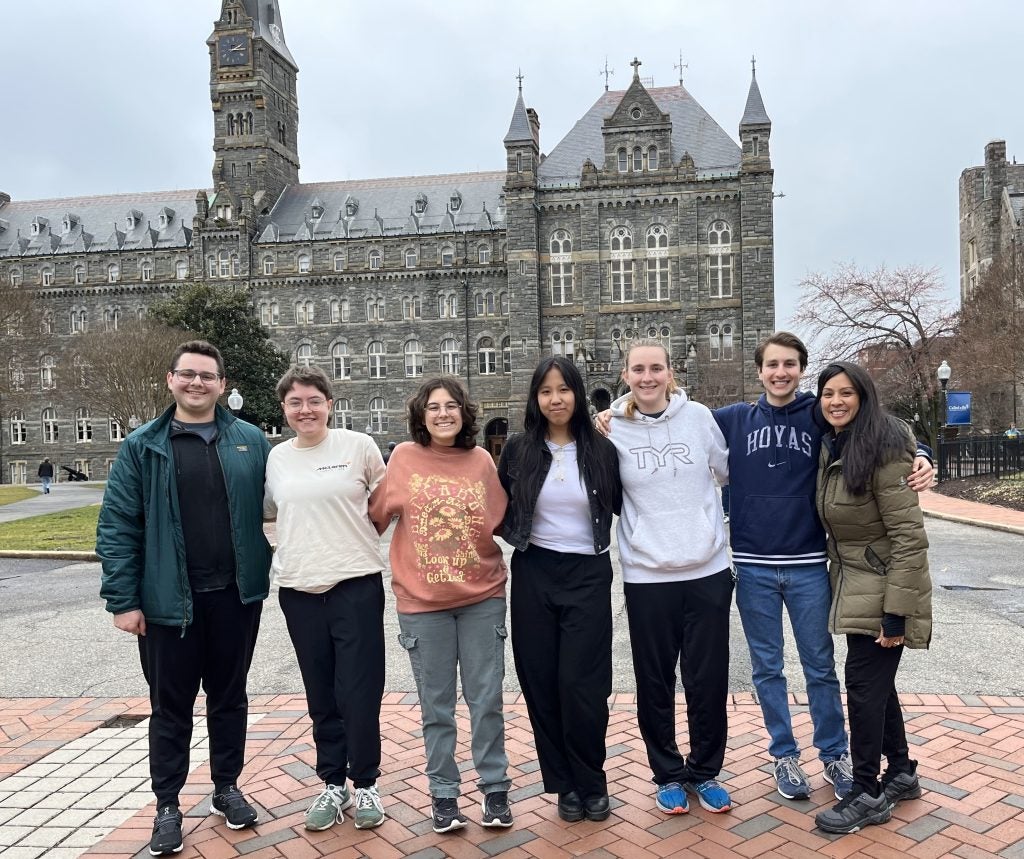
Established in 1940 in occupied France during World War II, the community has become known for its short, repetitive and contemplative hymns and centers on the themes of peace, reconciliation and young people.
“As a campus minister, it’s exciting to accompany students on prayer-focused experiences that are a healthy departure from their life at Georgetown,” said Owen Ruggiero, assistant director of music and liturgy in Campus Ministry who accompanied the students to Taizé. “My hope for our Taizé pilgrims is that they will take what they experienced on the hilltop of Taizé — a routine of prayer, discussions of peace and reconciliation, encounters with fellow pilgrims from around the globe — and apply it to their life, work and spirituality on the Hilltop of Georgetown.”
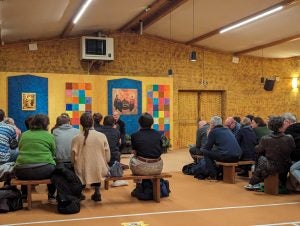
When Pitman first heard of the pilgrimage during Sunday night Mass in Dahlgren Chapel, he was intrigued. He knew Taizé prayer happened every Tuesday at 8 p.m. in Georgetown’s Ecumenical Chapel but had never tried it.
But the next time Pitman passed by the chapel just minutes before the week’s Taizé prayer service, he took a leap of faith and entered.
“It was honestly just kind of a hunch … I am not the greatest singer in the world to be honest. But I was sitting in there, and it’s full of such a sense of inner peace that you can’t really get anywhere else,” he said.
After leaving the prayer session, Pitman made his decision. If this is what 30 minutes of Taizé prayer was like, he was definitely going on the pilgrimage.
For Camille Deschapelles (C’26), a sophomore in the College of Arts & Sciences, prayer and singing have always gone hand-in-hand. She frequently visits the John Main Center for Meditation and Interreligious Dialogue to meditate and pray. A musician, she also sings every Sunday during the 8 p.m. Mass in Dahlgren Chapel as part of the Contemporary Choir.
When she got the opportunity to embark on the pilgrimage to Taizé through a fellowship sponsored by the Trust for the Meditation Process, she knew this was the next phase of her faith journey.
“It seemed like the universe, God was pointing to me [and saying,] ‘Yes, this is the next step for you.’”
A Monastic Rhythm of Life
Every day at Taizé follows a familiar rhythm.
Wake up at 7 a.m. Morning prayer. A simple breakfast with community members followed by Bible study groups. Midday prayer, then lunch. In the afternoon, chores and tasks to do around the grounds. Free time to explore and rest. Community dinner. And, finally, evening prayer to end the day.
At the heart of every day are the three prayer sessions in the Church of Reconciliation, the main worship space in Taizé. Each prayer session is similar. Several opening hymns and Psalms, followed by a Gospel passage. Another hymn, then a period of silence and finally more hymns. The contemplative hymns sung throughout the week typically reflect the dominant language spoken by the pilgrims present on any given week.
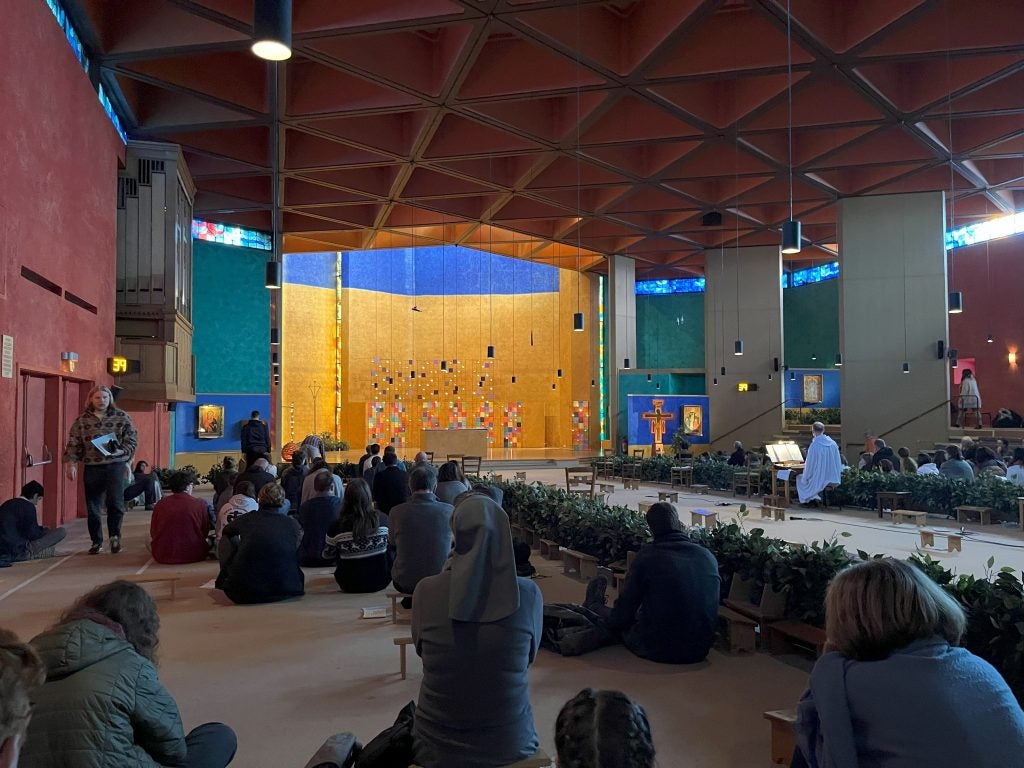
During their pilgrimage, the Georgetown students sang many hymns in English, French and German, owing to the large groups of pilgrims from Western Europe and another college group from the U.S. However, pilgrims that week hailed from as far away as Hong Kong and South Korea.
For Deschapelles, the international community at Taizé inspired her and allowed her to see the global nature of Christianity.
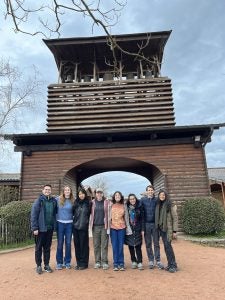
“It goes back to the idea of how Church and community can be so big. And, actually, it’s better if it’s bigger and more diverse because then you get different perspectives and get to change things up, and it’s not all an echo chamber,” she said.
“The beautiful thing about Taizé is that it brings together all these followers of Christ, regardless of maybe they do little things here and there a little differently, but at its core, these are all people who want to follow Christ.”
In the rote structure of the day, Pitman found a space for prayer and reflection he’s never had before, especially in the midst of a hectic first year at Georgetown. It’s one of the main reasons he wanted to join the pilgrimage.
“I have been running around like a chicken with my head cut off trying to do all of these things [at Georgetown],” he said. “And for once to actually have time where you have no other work and no other obligations except this one time for prayer … being given that opportunity was something that really opened my eyes to so many different aspects of that relationship with God I wasn’t getting before because I was too busy.”
Exploring a Relationship With God and Church
“Mon âme se repose.”
This is the title of one of Deschapelles’ favorite Taizé hymns. In the songbooks pilgrims use to sing and pray, the translated lyrics read, “In God alone my soul can find rest and peace, in God my peace and joy. / Only in God my soul can find its rest, find its rest and peace.”
